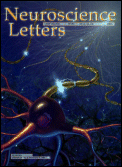
 |
Essential Role for Cholesterol in Synaptic Plasticity
and Neuronal Degeneration.
Click on the FASEB Journal cover
To have brief condensed account of this full size research communication please read the article FASEB J Express Summary (present both online and in the hard copy of The FASEB Journal August 2001 issue) Lay language summary for this article is also available in the format of The Society for Neuroscience 2001 Press book article
Abstract There is no understanding of the role of cholesterol and phospholipids in the mechanisms of synaptic function and neurodegeneration. Here we report that cholesterol disbalance is critical for synaptic transmission and plasticity as investigated by a study of paired pulse facilitation (PPF) and long-term potentiation (LTP). Extracellular recording of field evoked postsynaptic potentials showed enhanced PPF ratio and an impairment of LTP in CA1 subfield of adult rat ex-vivo hippocampal slices subjected to cyclodextrin- or normal human CSF-HDL3-mediated cholesterol efflux. Immunofluorescence with antibodies against neurofilament and tau revealed that cholesterol and phospholipids depletion causes alteration of normal hippocampal neurites and appearance of PHF-tau in the mossy fibers. We further find that LTP and amyloid beta protein increase [14C]acetate label incorporation into newly synthesized hippocampal membrane lipids. Our results indicate importance of neuronal cholesterol redistribution and synthesis for synaptic plasticity and neurodegeneration. Authors key words:
First preliminary account: Neurosci
Lett 2000 S55: S30.

(Also see Koudinovs SFN'2001 Meeting Central) Postpublication account: Science
2002
295:
2213. |
what is this?
|
We will be happy to answer your research/technical details
questions![]()
Thank you for visiting Drs. Koudinov Internet Office
Site Design and Programming © Alexei Koudinov, 2001. Last updated: July 29, 2002